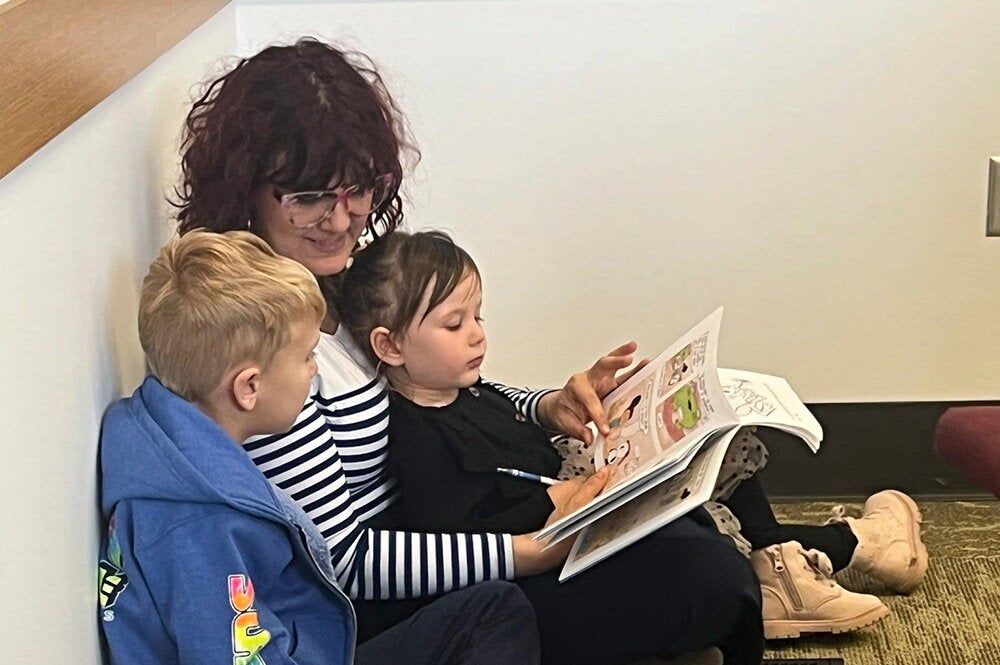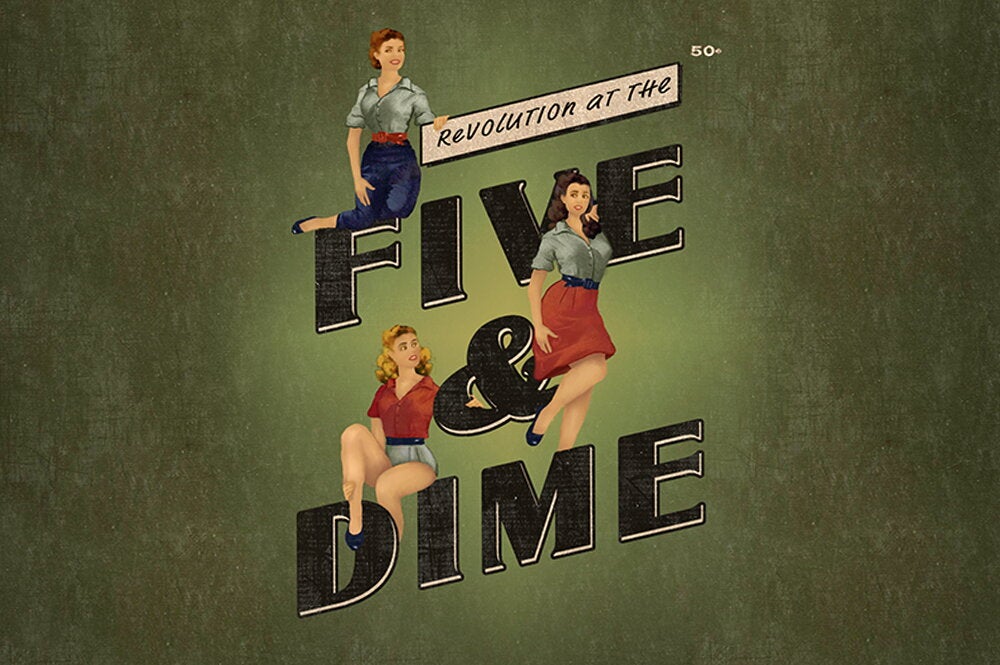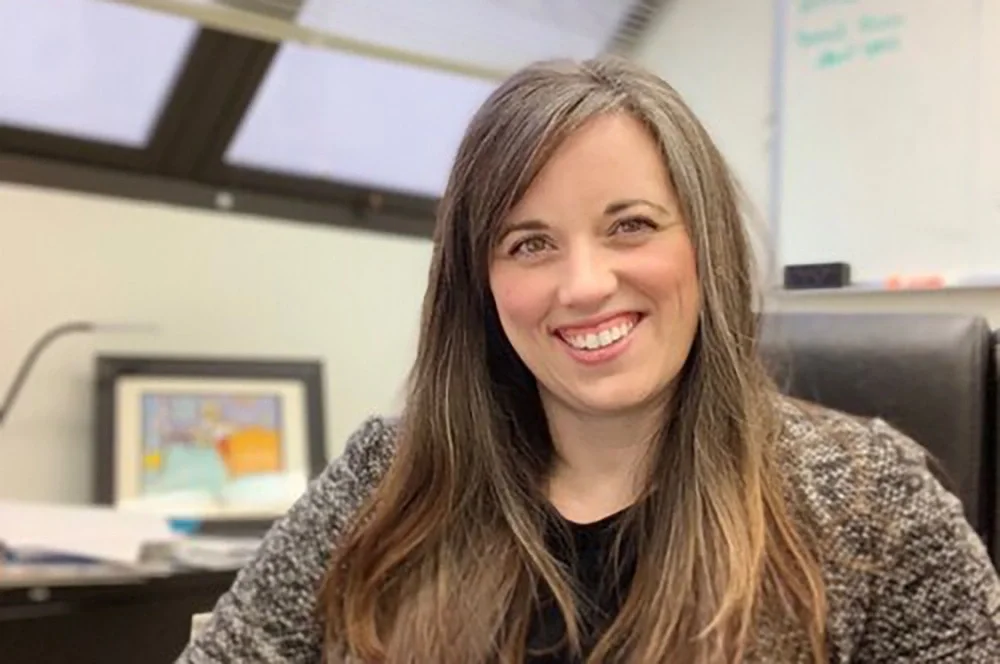
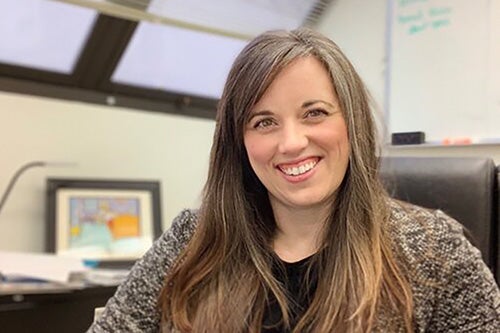
When Monica Turchyn was completing her undergraduate degree in community health at the University of Illinois Urbana-Champaign, she took an online course on drug use and misuse. The course had an open access textbook written by the course instructor, which the students in the class used free of charge. Saving money on a textbook made a big difference to her, said Turchyn, a first-generation college student who returned to school in her early 30s to complete her degree while raising a young son.
“Textbooks are one financial burden you don’t necessarily consider when you think about going back to school. It was a big sacrifice for my family for me to go back to school. I was trying to get through undergrad as fast as possible, taking 20 credit hours per semester. With six to seven classes, having to buy a book for each class is really hard,” said Turchyn, who subsequently received her master’s degree in public health and now works as an adjunct instructor in the College of Applied Health Sciences.
The open access textbook she used in the class was created with the help of an Open Educational Resources Grant provided to the University Library from the Illinois State Library.
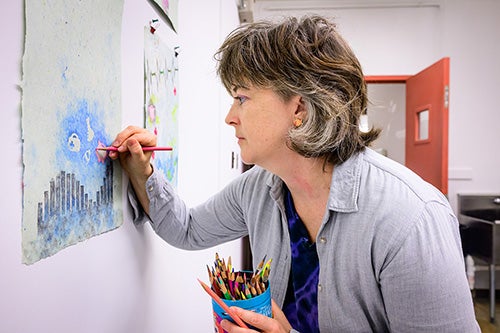
“Textbook prices are so high. There’s been a movement in libraries to help create and foster open educational resources because the prices of textbooks keep going up and up and up,” said copyright librarian Sara Benson, who is coordinating the grant project for the Library.
The drug use and misuse class has a high enrollment because it fulfills a general education requirement, so it was a good choice for the first open access textbook that was created through the library grant two years ago, Benson said. The printed textbook that was previously used for the class cost $90. More than 2,000 students have taken the course in person and online since the open access textbook has been available, saving them a total of $184,000, she said.
The most recent Open Educational Resources Grant, which started in July, and a grant program through the provost’s office are providing funding for eight faculty members currently writing open access textbooks in subjects that include French, healthcare finance, engineering, epidemiology and social work. The faculty members can use the grant money to offset the royalties they would get from a printed textbook or to pay graduate students to help produce the book.
Instructional designers at the Center for Innovation in Teaching and Learning help faculty members with creating online materials, and the center produced podcasts about creating and learning from open access textbooks. The textbooks are published through Library’s Scholarly Communication and Publishing unit.
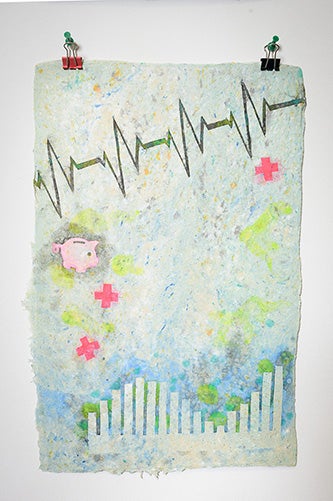
Open access textbooks are highly used because they are available to anyone worldwide, Benson said. Most allow translations to different languages and modifications by users to better suit their classes, such as writing their own study questions, adding a section or changing the order of the content, she said. Authors can include videos, glossaries, links to other resources and interactive materials that help students gauge their understanding of the content.
“One of the beauties of open educational resources is not just that it’s free. Its open license allows it to be more useful to faculty so they can use it however suits them best. It becomes much more flexible,” Benson said.
French professor Amy Clay is writing an open access textbook for two intermediate French courses. She said language instruction in the past 20 years has moved from a focus on grammar, vocabulary, and conjugating verbs to providing context for how language is used in real texts, but not all textbooks reflect that shift.
“Textbooks are really valuable, especially for novice teachers, but this is not something language textbooks have really taken on in the U.S.,” Clay said.
Her textbook will focus on Francophone culture, and she is including a wide variety of content, including the writing of authors Maryse Condé and Victor Hugo, advertisements from Morrocco and a song from the French opera “Carmen,” which she included because many voice students, who are required to study a language, take French. Clay said she wants to increase the diversity of the materials so more students can relate to them.
“Some students take French because their grandparents are from Senegal and those students rarely see themselves in textbooks. I want to change that. Even if it’s looking at an ad from a grocery store in Dakar, they can see familiar items,” she said. “It will give us a chance to talk about what is the French-speaking world and interact with different perspectives and voices of people that students may not otherwise interact with.”
Andiara Schwingel, the associate head for undergraduate studies in the health and kinesiology department, and Christy Bazan, an adjunct instructor in that department, are the co-authors alongside other colleagues of an open access epidemiology textbook.
The epidemiology course has about 300 students each semester and is required for the community health major, as well as fulfilling a general education requirement. The department recently added a concentration in epidemiology for its master’s degree in public health. Schwingel said the department wanted an epidemiology textbook that included more local examples of data and Illinois initiatives and more up-to-date information.
“We felt the need to add newer, more contemporary epidemiology content. The printed textbook we use has no information about COVID-19,” she said.
Turchyn said using the textbook Bazan had written in the drug use and misuse class provided emphasis on certain information that helped her understand the concepts better.
Schwingel said the open access textbooks are written in a style that is less academic and more engaging for students. Other advantages to the online materials are increased accessibility for students with disabilities and the ability to deliver the content in different ways, allowing students to learn in the way that best suits them, she said.
